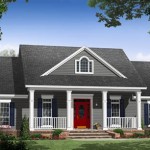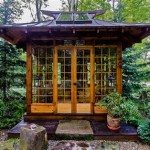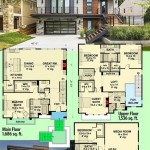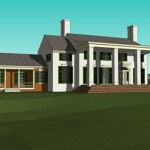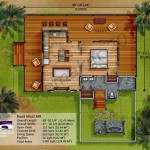Exploring Colonial House Plans of New England
Colonial house plans in New England represent a significant chapter in American architectural history. These homes, built primarily from the 17th to the 19th centuries, reflect the influence of European styles adapted to the available resources and practical needs of the early settlers. Understanding the characteristics of these house plans offers insight into the lives and values of the people who built and inhabited them.
The architecture of Colonial New England was not monolithic. It evolved over time, incorporating various imported styles such as the English Medieval, the Georgian, and the Federal, all while being modified by available resources and vernacular traditions. The climate of New England, with its harsh winters and warm summers, also played a deciding role in the design and construction of these homes.
The materials used in constructing these colonial homes varied depending on the region and the availability of resources. Wood was a common building material, especially timber frame construction. Bricks, imported initially and later locally produced, were used extensively, especially in larger towns and cities. Stone was used in some areas, particularly in regions with readily available quarries. The interiors were often finished with wood paneling, plaster walls, and wide plank floors.
Examining colonial house plans reveals recurring themes that point to a pragmatic approach to living. These homes often featured a central chimney to provide heat to multiple rooms, as well as symmetrical facades and carefully planned room arrangements to achieve both functionality and aesthetic appeal. Moreover, the design reflected the period's social and economic realities.
Let's explore some key aspects further:
Key Features of Colonial House Plans in New England
Several key features distinguish colonial house plans in New England. Examining these characteristics provides a deeper understanding of the architectural intentions and the practical considerations that guided their creation.
One of the most prominent features is the symmetrical facade. The front of the house was typically symmetrical, with a central door and an equal number of windows on either side. This symmetry was usually seen as a reflection of order and balance, values prized during the colonial era. The placement of these features was carefully considered, and this attention to detail contributed to the harmonious appearance of the structures.
Another characteristic is the presence of a large central chimney. The chimney served as the central heating source for the house, providing warmth to multiple rooms. Its size reflected the importance of heating in the cold New England climate. The placement of the chimney in the center of the house also provided structural support.
The interior layout typically included a center hall plan, with rooms arranged on either side of a central hallway. This layout provided a sense of formality and order, and it allowed for efficient circulation throughout the house. The size and number of rooms varied depending on the wealth and status of the family.
Small windows were another common feature. Glass was expensive and difficult to produce, so windows were kept small to conserve heat and minimize costs. The windows were often multi-paned, with small panes of glass held together by wooden muntins. These small windows also provided privacy and security.
The roof was typically gabled, with a steep pitch to shed snow and rain. The eaves often projected slightly beyond the walls, providing some protection from the elements. The roof was typically covered with wood shingles or slate tiles.
Evolution of Styles: From Saltbox to Georgian
Colonial architecture in New England passed through several distinct phases, each characterized by particular stylistic features and influences. Understanding these different styles provides insight into the changing tastes and priorities of the colonists.
The earliest colonial houses were often simple and functional, reflecting the settlers' immediate needs for shelter. These homes were typically small and built with readily available materials. The English Medieval style, with its heavy timber frames and steep roofs, influenced the early designs. These early homes also often featured a large central chimney and small, multi-paned windows.
The Saltbox style evolved from these early homes, characterized by a long, sloping roof that extended down to the rear of the house. This design provided additional living space and protection from the elements, especially during the harsh New England winters. The saltbox design often included a lean-to addition at the rear of the house, used for storage or additional living space.
As the colonies prospered, the Georgian style became increasingly popular. Georgian architecture was characterized by its symmetry, proportion, and classical details. Georgian homes typically featured a symmetrical facade with a central door and an equal number of windows on either side. The windows were larger than those in earlier colonial homes, and they were often adorned with decorative shutters.
The interior of Georgian homes was also more elaborate than those of earlier colonial homes. Rooms were often paneled with wood, and the walls were adorned with decorative moldings. Fireplaces were often surrounded by ornate mantels. The Georgian style reflected the growing wealth and sophistication of the colonial elite.
Following the Georgian period, the Federal style emerged. The Federal style was influenced by classical Roman architecture, and it was characterized by its refined details and elegant proportions. Federal homes often featured elliptical windows, delicate moldings, and decorative swags and garlands. The Federal style represented a departure from the more austere designs of earlier colonial periods.
Impact of Environment and Available Resources
The environment and available resources exerted a profound influence on the architecture of Colonial New England. The climate, geography, and availability of materials all played a significant role in shaping the design and construction of these homes.
The harsh New England climate, with its cold winters and hot summers, dictated the need for durable and well-insulated homes. The use of wood as a primary building material reflects the abundance of forests in the region. Timber frame construction provided a strong and stable structure that could withstand the elements. The steep roofs of colonial homes were designed to shed snow and rain efficiently.
The availability of local stone influenced the construction of homes in certain regions of New England. Stone was used for foundations, walls, and chimneys. Stone buildings were particularly common in areas with readily available quarries. The use of stone provided added durability and resistance to fire.
The lack of readily available manufactured goods also shaped colonial architecture. Windows were kept small due to the high cost of glass. The use of locally sourced materials, such as wood shingles and clapboard siding, reflects the limited availability of imported goods. The simplicity of the interior finishes also reflects the limited access to decorative materials.
The economic activities of the region also influenced the design of colonial homes. Farmhouses were typically designed with practical considerations in mind, such as the need for storage space for crops and livestock. Homes in port cities often reflected the wealth and status of merchants and traders. The design of these homes often incorporated elements of European architecture, reflecting the owners' cosmopolitan tastes.
The colonial house plans of New England exemplify resilience and adaptation, showcasing how settlers creatively used what was available to them to build homes that were not only functional but also reflected their aspirations and values.

Colonial Early New England Homes

Colonial House Plans Styles Sizes And Floor

88 Colonial House Plans Ideas In 2024

Colonial Early New England Homes

Home Classic Colonial Homes

Plan 3462

50 Top New England House Plans And Northeast Style Designs

Elbring New England Style Home Plan 055d 0155 Search House Plans And More

Home Classic Colonial Homes

Vintage Home Plans Gambrel 2


